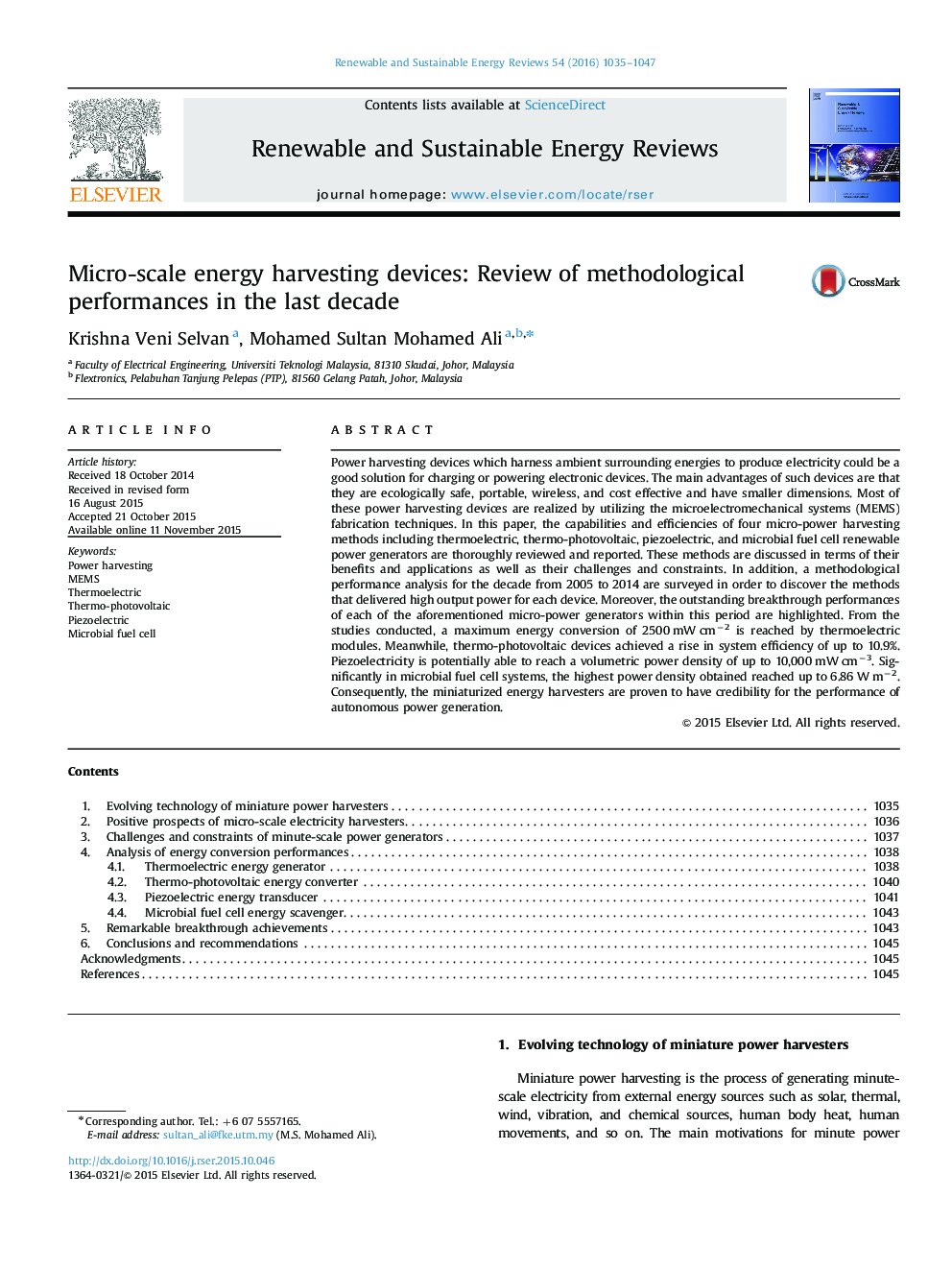| Article ID | Journal | Published Year | Pages | File Type |
|---|---|---|---|---|
| 1749897 | Renewable and Sustainable Energy Reviews | 2016 | 13 Pages |
Abstract
Power harvesting devices which harness ambient surrounding energies to produce electricity could be a good solution for charging or powering electronic devices. The main advantages of such devices are that they are ecologically safe, portable, wireless, and cost effective and have smaller dimensions. Most of these power harvesting devices are realized by utilizing the microelectromechanical systems (MEMS) fabrication techniques. In this paper, the capabilities and efficiencies of four micro-power harvesting methods including thermoelectric, thermo-photovoltaic, piezoelectric, and microbial fuel cell renewable power generators are thoroughly reviewed and reported. These methods are discussed in terms of their benefits and applications as well as their challenges and constraints. In addition, a methodological performance analysis for the decade from 2005 to 2014 are surveyed in order to discover the methods that delivered high output power for each device. Moreover, the outstanding breakthrough performances of each of the aforementioned micro-power generators within this period are highlighted. From the studies conducted, a maximum energy conversion of 2500Â mWÂ cmâ2 is reached by thermoelectric modules. Meanwhile, thermo-photovoltaic devices achieved a rise in system efficiency of up to 10.9%. Piezoelectricity is potentially able to reach a volumetric power density of up to 10,000Â mWÂ cmâ3. Significantly in microbial fuel cell systems, the highest power density obtained reached up to 6.86Â WÂ mâ2. Consequently, the miniaturized energy harvesters are proven to have credibility for the performance of autonomous power generation.
Related Topics
Physical Sciences and Engineering
Energy
Renewable Energy, Sustainability and the Environment
Authors
Krishna Veni Selvan, Mohamed Sultan Mohamed Ali,
